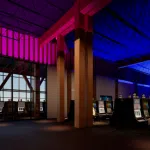
The Disney Roller Coaster That Doubles As Medical Treatment
Featured in Ripley's Believe It or Not!

There are many physical sensations people experience when riding a roller coaster: heart flutters, a drop in the stomach, and lightheadedness, to name a few. But did you know that Disney’s iconic Big Thunder Mountain Railroad roller coaster has also been known to make your body react in more substantial ways, such as passing a kidney stone? Believe It!




